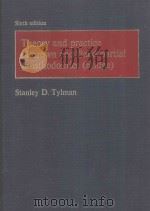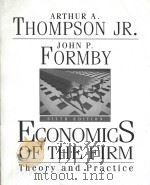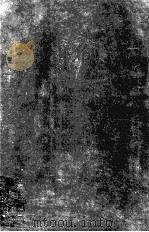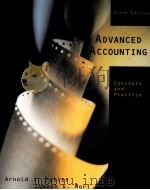《THEORY AND PRACTICE OF CROWN AND FIXED PARTIAL PROSTHODONTICS SIXTH EDITION》
| 作者 | STANLEY D.TYLMAN 编者 |
|---|---|
| 出版 | THE C.V.MOSBY COMPANY |
| 参考页数 | 1023 |
| 出版时间 | 1970(求助前请核对) 目录预览 |
| ISBN号 | 无 — 求助条款 |
| PDF编号 | 813936568(仅供预览,未存储实际文件) |
| 求助格式 | 扫描PDF(若分多册发行,每次仅能受理1册) |

Chapter 1History of crown and fixed partial prosthodontics (bridge)1
Early history1
The nineteenth century4
The twentieth century5
Early developments5
Further developments10
Definitions related to crown and fixed partial prosthodontics10
Chapter 2Factors relating to examination of patient requiring crowns and fixed partial prostheses13
General examination14
Indications14
Oral examination18
Necessity for roentgenographs18
Recording data19
Pulp tests19
Former oral health service20
Fillings20
Crowns21
Fixed partial dentures21
Removable partial denture22
Complete denture22
Orthodontic treatment22
Surgery23
Ora abnormalities23
Upper anterior restorations25
Biologic aspects of foundation25
Tooth form and function28
Root anatomy30
Forces and stresses30
Concepts of occlusion31
General considerations of patient32
Type of patient32
Dental analysis33
Number and location of teeth33
Form,position,size of teeth34
Analysis of occlusion34
Dental abnormalities34
Extraction35
The pulp36
Treated teeth36
Dental fractures and tissue dyscrasias36
Caries37
Fractures of teeth:resorption and repair38
Internal and external resorption41
Erosion42
Enamel hypoplasia42
Abrasion and attrition43
Opalescent dentin or dentinogenesis imperfecta43
Porphyria erythropoietica44
Chapter 3Types of restorations utilized in crown and fixed partial prosthodontics52
Immediate fixed partial denture service53
Prerequisites54
Types of crowns56
Types and components of fixed partial dentures:anterior and posterior59
Pulpless teeth68
Orthodontic procedures:rotated and tilted teeth69
Arrowhead bite plane69
Surgical treatment72
Cleft palate73
Oral disorders73
Materials used74
Use of dissimilar metals74
Preventive measures75
Chapter 4Histologic structure of teeth and sup-porting tissues in relation to crown and fixed partial prosthodontics78
Calcified dental tissues78
The enamel78
The dentin82
The cementum 85The alveolar process86
Noncalcified dental tissue87
The pulp87
The periodontal membrane (ligament)90
The gums and gingivae92
Chapter 5Anatomy of the stomatognathic system related to crown and fixed partial prosthodontic therapy97
Chapter 6The maxillae—mandible and related factors106
The maxillae:ridge and arch form106
Alveolar process107
Changes following extraction108
The palates109
The mandible109
Ridge and arch form110
Mylohyoid ridge110
Mental foramen111
Other oral factors:mucous membrane111
The tongue111
Glands of the mouth112
Masticatory force112
Facial factors113
Form and color harmony113
Facial form113
Profile form115
Color harmony115
Lips115
Facial landmarks116
Chapter 7Stomatognathic physiology related to crown and fixed partial prosthodontic therapy118
Slide from retruded contact to maximum inter-cuspation119
Interocclusal distance and movement from rest position to maximum intercuspation121
Centric relation closure arc and terminal hinge position122
Types of occlusal function123
Proprioception in the stomatognathic system126
Summary128
Chapter 8The elderly person who requires crown and fixed partial prosthodontics132
A new era of old people132
Less endentulous oldsters133
Old individuals are individual133
Application in crown and fixed partial prostho-dontics134
The interview137
Biologic concepts in technical procedures138
The oral examination138
Interproximal abrasion142
Rampant dental caries in advanced age143
Endodontics145
Periodontics and perioprosthodontics146
The mobile tooth146
The space to be spanned147
Design of preparations147
Cantilever pontics148
Cementation148
A silent tongue can speak148
Chapter 9Distribution of abutments,crowns,and fixed partial dentures relative to patient’s sex and age152
Loss of one tooth152
Loss of several teeth153
Crowns and fixed partial dentures154
Chapter 10Movements of abutment teeth related to the fixed partial denture160
Buccolingual movement160
Distomesial rotation162
Movement of the bridge as a whole164
Loose abutments178
Use of pier (intermediate abutment)179
Chapter 11Biologic interpretation of physical and mechanical principles181
Types of forces181
Centers of rotation in teeth182
Forces of mastication184
Effects on biting force184
Biting force in partially edentulous mouths185
Causes of abnormal forces188
Anterior component of force190
Intra-alveolar movement of teeth191
Shape of roots191
Chapter 12Stomatognathic pathologic physiol-ogy related to crown and fixed partial prosthodontic therapy195
Chapter 13Mechanical principles in preparing teeth for intracoronal,extracoronal,and complete crown retainers200
Ideal abutment200
Questionable abutments201
Root length of abutment202
Classification of retainers202
The ideal retainer203
Selection of type203
Principles of intracoronal preparation204
Class Ⅰ,types 1 and 2204
Black’s principles of cavity preparation205
Modifications of retention and resistance form209
The inlay and its cavity (forces,stresses,and retention)215
Principles of extracoronal preparations225
Anterior partial veneer retainer; class Ⅰ,type 3225
Posterior partial veneer retainer; class Ⅰ,type 4225
Complete cast gold retainers; class Ⅱ,type 1228
Role of enamel in preparation of retainers229
Cutting the enamel wall229
Structural requirements for enamel walls232
Chapter 14Methods of cutting teeth and prefer-ential use of instruments236
Heat generation242
Coolants243
Vibration244
Size of cutting instrument and cutting speeds247
The biologic responses of the pulp to high-speed cutting247
Limit of heat tolerance of the pulp248
Aspirated or misplaced odontoblasts248
Chapter 15Tooth preparations and instrumenta-tion:class Ⅰ,type 1—anterior intracoronal retainers254
Intracoronal retainers255
Indications255
Intracoronal retainers in pulpless teeth255
Removal of caries256
Steps in the preparation of an anterior class Ⅰ,type 1,intracoronal retainer257
Outline form257
Resistance and retention forms257
Class Ⅰ,type Ⅰ retainers:steps in preparation259
Chapter 16Tooth preparations and instrumenta-tion:class Ⅰ,type 2—posterior intracoronal retainers265
Indications265
Steps in the preparation of a posterior intra-coronal retainer266
Outline form266
Resistance and retention forms268
Modifications276
The slice preparation277
Chapter 17Tooth preparations and instrumenta-tion:class Ⅰ,type 3—anterior extra-coronal partial veneer retainers285
General considerations285
Indications285
Separation286
Removal of decay286
Outline form286
Gum retraction and removal287
Resistance and retention forms288
Incisal groove288
Proximal grooves288
Axial walls290
Steps and instrumentation of preparation290
Preparation of proximal surfaces290
Incisal cut291
Lingual cuts292
Incisal groove294
Axial proximal grooves295
Cervical margin preparation296
Chapter 18Tooth preparations and instrumenta-tion:class Ⅰ,type 4—posterior extra-coronal partial veneer retainers301
Indications303
Outline form305
Resistance and retention forms307
Upper abutments308
Steps of preparation308
Lower abutments313
One-half veneer crown313
Steps of construction314
MacBoyle type319
Chapter 19Intermediate retention of retainers320
Cement320
Metal pins325
Threaded key326
Modifications329
Lower abutments330
Kabnick type330
MacBoyle type331
Pinlay and pinledge retainers332
Pin and pinledge retention of cast restorations335
Preparing pinholes—direct method335
Fridge paralleling guide336
Parallel grooves340
The Ney Parallel Pin technic341
Operative procedure342
Laboratory procedure343
Placement of the finished restoration347
Chapter 20Construction of retainers:direct method—materials,equipment,and procedures350
History of dental casting350
Fabrication of direct retainers—the direct method,351
Need for matrix351
Manipulation of inlay wax356
Use of lubricant358
Design of tooth form and occlusion—Everitt Payne method358
Planning and preparations358
Materials360
Forming the wax pattern by direct method in the mouth365
Attaching sprue pin366
Use of reservoir368
Treatment of wax pattern368
Investing369
Expansion of casting investments369
Wax elimination:oven temperature381
Casting382
Chapter 21Construction of retainers:indirect method—materials,equipment,and procedures (hydrocolloids )391
Hydrocolloids—reversible and irreversible391
Die fabricated in elastic impression materials391
Disadvantages of the indirect method392
Hydrocolloid impression materials393
Reversible (agar-agar) impression material394
Retraction of gingival tissue403
Injection of hydrocolloid material410
Positioning the tray412
Removal and treatment of impression413
Pouring cast in stone and completion414
Requirements for the die materials416
Wax pattern fabrication on die423
Limitations of irreversible (alginate) impression material424
Chapter 22Construction of retainers:indirect method—materials,equipment,and procedures (mercaptan—silicone base)429
Physical and mechanical properties of impres-sion materials430
Impression technic using mercaptan rubber base impression material432
Constructing the tray432
Individual impressions in bands440
Steele’s copper-die442
Silicone elastic impression materials443
Technic for mixing and taking the impression443
Proportions443
Tray elasticon base443
Mixing444
Cleaning the syringe448
Electroformed dies and casts449
Chapter 23Tooth preparation and construction of complete metal crowns without dowels:posterior and anterior class Ⅱ,type Ⅰ461
Posterior teeth461
Indications461
Requirements462
Disadvantages463
Difficulty in cementing crown464
Preparation of carious tooth464
Use of pulpless tooth464
When to use dowels465
Types of complete cast metal crowns without dowels466
Advantages of the cast type of crown466
Preparation of tooth466
Finishing the shoulderless preparation at the gingival margin473
Methods of constructing posterior metal crowns474
The swaged-cast shoulderless type474
Modified type:cast occlusal surface480
All-cast type of crown482
Preparation of tooth:shoulder and shoulderless types482
Waxing the crown484
Finishing and cementing crown485
Hollenback east shoulder crowns using porcelain veneer facing486
Fired porcelain veneer facing type492
Chapter 24Tooth preparation for complete porcelain veneer crowns:anterior and posterior teeth—class Ⅱ,typeⅠ495
Advantages and disadvantages495
Indications496
Requirements496
Roentgenographs and study casts498
Use of warm water and anesthetics498
Types of preparations498
Shoulderless preparation498
Shoulder preparation500
Chapter25Color:principles,selection,and reproduction in crowns and fixed partial prosthodontics—materials,equipment,and application530
Principles and theories530
Fundamentals of facial art530
Fundamentals of color (hue)531
Color in natural teeth535
Selection of color for prosthetic restorations535
Reproducing colors in porcelain537
Influence of cement on color537
Distribution of porcelain539
Surface texture of porcelain539
Position and shape of tooth539
Use of stains and stained porcelain539
Restoring glazed surface541
Chapter 26Construction of complete porcelain veneer crowns,securing impression of preparation,constructing dies,and firing porcelain547
Matrix construction552
Lingual relief of tinner’s joint556
Relief to allow for porcelain shrinkage558
Characteristics of porcelain559
Low-fusing porcelain560
Medium-fusing porcelain560
High-fusing porcelain560
Methods of applying porcelain560
Drying the porcelain crown561
Firing porcelain in air or vacuum561
Number of firings required562
Porcelain furnace563
Calibrating porcelain furnace563
Duplicating colors564
Application of porcelain in constructing crowns,564
First application565
Second application566
Trimming and fitting crown568
Final glaze569
Removal of matrix569
Cementing crown569
Removal of excess cement569
Use of prefired veneer569
The direct fabrication of restorations without foil on a refractory die570
Die properties570
Die and model preparation572
Jacket crown fabrication573
Butt-shoulder restorations575
Chapter 27Tooth preparation:construction of dowel crowns—anterior and posterior teeth580
Early types of dowel crowns580
Types of crowns580
All-metal gold cast type580
Detached dowel type581
Cast metal base type581
Fused porcelain base type581
Swaged iridioplatinum base582
Richmond crown584
Types and component phases of construction,584
Cast type Richmond crown585
Root preparation590
Aluminous porcelain crown with ceramic base fused to dowel599
Aluminous porcelain dowel crown using platinum coping601
Aluminousporcelain dowel crown without a metal coping604
Chapter 28Construction of working models607
Transfer to articulator: functionally generated path method607
Treatment of the ridge mucosa607
Types of impressions and work models608
Soldering-investment model608
Low-fusing alloy model608
Combination model of alloy and stone610
Working models for indirect technic610
Functionally generated path methods: Hanau,Jelenko611
Hanau twinstage occluder method612
Jelenko Verticulator method618
Chapter 29Procedure for transfer to articulator using adjustable hinge axis face bow and interocclusal records623
Location of the hinge axis625
Relating the maxillary cast to the terminal hinge position of the mandible628
Transfer of the maxillary cast to the articulator629
Modification of face bow (XP)636
Centric occlusion or centric relation637
Preparation of interocclusal record638
Recording centric occlusion640
Transfer of mandibular cast in centric occlusion641
Records for setting the articulator642
Interocclusal record of protrusive relationship642
Setting articulator to protrusive record643
Right and left lateral interocclusal records644
Right lateral relation record646
Left lateral relation record646
Adjustment of incisal guide647
Checking the accuracy of the transfer648
Chapter 30Construction of pontics for fied partial dentures:indications,types,and materials650
Requirements of a pontic650
Types of pontics650
Older types650
Modern types650
Tissue response651
Biologic reactions to porcelain root extension pontics651
Changes occurring in ridge652
Types of mucosa652
Finish and contour of pontics652
Width of porcelain facing653
Length of facing653
Buccolingual width653
Abnormal conditions653
Embrasures653
Shape of gingival area655
Advantages of porcelain655
Length of pontic655
High lip line and pontics656
Staining and modifying pontics656
Treatment of incisal edge656
Restoring occlusion657
Metal portion of pontic657
Hollow grinding the facing658
Replaceable type of facing658
Shapes of pontics and ridges658
Selection of facing659
Alignment of pontic659
Ridge-lap and “saddle” types661
Conical root type661
“Sanitary bridges,”663
Position of platinum pins665
Construction of plaster core or index666
Firing porcelain to the facing666
Firing the pontic “shelf,”668
Second application and firing porcelain669
Shaping the pontic670
Beveling the and hollow grinding671
Waxing the lingual and occlusal contours672
Treatment of platinum pins673
Use of graphite points or metal pins673
Fitting casting to facing674
Treatment of the incisal edge675
Use of porcelain teeth for pontics677
Chapter 31Gold alloys and soldering operations related to crown and fixed partial prosthodontics682
Principles of metallography as applied to dentis-try682
Space lattices682
Slip planes683
Pure metals684
Gold alloys685
Types of metal alloys685
Gold-copper alloy687
Specifications of alloys687
Classification of inlay casting golds688
Physical properties of alloys688
Gold alloys and their specifications689
Heat treatment691
Two methods of heat treatment691
Results of heat treatment692
Soldering692
Requisites of a solder692
Factors involved in successful soldering692
Use of flux and antiflux693
Position of parts to be soldered693
The soldering flame693
Results of excessive beat694
Position of invested crown or bridge695
Temperature of investment695
Excessive use of flux696
Location and amount of solder696
Procedures following the soldering operation696
Pickling and contamination696
Chapter 32Assembling retainers and pontics utilizing connectors (nonrigid and rigid)699
The soldered connector699
Use of core or index700
Investing the bridge700
Preparing the bridge for soldering701
Uniting the parts of the bridge701
Trial in mouth701
Taking final impression702
Final soldering of bridge702
Cementing the bridge702
The broken-stress principle703
Nonrigid connector703
Nonprecision types of broken-stresses704
Precision types of broken-stress connectors711
Chapter 33Installation,maintenance,and repair of crowns and fixed partial prostheses712
Testing the bridge before cementation712
Setting the bridge temporarily712
Preparing the abutment teeth713
Selection and mixing of cement713
Essentials of correct cementation713
Lubricating the bridge714
Difficulties in cementing crowns714
Cementing the crown or bridge715
Procedures following cementation715
Scope of maintenance716
Purpose of maintenance service716
Occurrence of changes717
Recording the oral and general health717
Roentgenographic data717
Recording method of tooth preparation718
Recording strength of bite720
Value of accurate records720
Time of subsequent examinations720
Constructing additional study casts721
Instruction in the care of the prosthesis721
Repair721
Causes for removal of prostheses721
Removal and repair of gold crowns722
Repair of porcelain crowns723
Removal of crown with dowel723
Removal of dowel723
Removal of bridges724
Removing an all-porcelain bridge725
Removal of complete porcelain veneer crown726
Repair of crown or bridge facing726
Repairing long pin pontic; hydrocolloid technic727
Chapter 34History and development of metal-ceramic fixed partial dentures (bridges) ; early types to present-day restorations733
Indications and contraindications for porcelain bridges734
Types and construction of porcelain bridges734
The all-porcelain bridge734
The metal reinforced bridge735
Chapter 35Current dental restorations utilizing ceramics fired to gold-alloy castings (Thermalite,Micro-Bond,Ceramcoporcelains)757
Use of Thermalite 1750° F.porcelain and Ney-Oro P-16 casting gold757
Technic for constructing Micro-Bond Hi-Life res-torations763
Metal phase764
Spruing766
Investing and burnout (using Ceramigold in-vestment—Whip Mix Corp.)766
Soldering768
Preparation of metal for porcelain application768
Porcelain phase769
Trouble shooting771
Metal phase771
Porcelain pbase771
Ceramco technic773
Vacuum firing776
Completing the firing cycle for vacuum opaque777
Completing the firing cycle for vacuum gingival and incisal777
Glazing777
Chapter36Alumina-reinforced ceramics780
Alumina-reinforced porcelains780
Formulation of aluminous porcelains781
Indications for use782
The atypical preparation783
Principles of esthetics783
Aluminous porcelain materials787
Construction of the aluminous complete porcelain veneer crown788
Technic for constructing low-fusing core porce-lain788
Cervical relief790
Vacuum-firing and air-firing technics790
Aluminous core porcelain—first firing793
Aluminous core porcelain—second firing793
Application of gingival and body veneer porce-lains793
Applications of enamel veneer porcelain794
Final characterization795
Aluminous porcelain intense color modifiers797
Contact area adjustment797
Grinding and staining797
Glazing798
The posterior aluminous porcelain crown798
Preformed high-alumina ceramic reinforcements799
Palatal reinforced crowns802
High-alumina curved strip (S.1)802
Technic802
Chapter 37Gnathologic procedures utilizing the Denar Model D4-A and pantograph806
Anterior and posterior control areas806
Articulator calibrations808
Horizontal reference plane809
Midsagittal reference plane809
Posterior control areas809
Anterior control area810
Posterior control adjustments810
Horizontal condylar guide adjustment: antero-posterior angle of the eminentia protrusive811
Immediate-side-shift adjustment811
Progressive-side-shift adjustment811
Sagittal displacement of the rotating condyle;backward and forward rear wall adjustment811
Lateral condylar path adjustment; lateral ad-justment orbiting path adjustment812
Custom-grinding inserts812
Anterior control adjustments813
Vertical dimension of incisal pin; incisal pin ad-justment813
Horizontal overjet adjustment; long centric ad-justment813
Protrusive inclination of the incisal table; angle of the incisal table anteroposteriorly; anterior vertical overbite adjustment813
Lateral wings of the incisal table; angle of the incisal table mediolaterally813
Initial reference813
Horizontal reference plane813
Anterior reference point813
Posterior reference points813
Summary814
Reference plane location815
Clutch construction (registration tray)816
Dentulous patient816
Denar pantograph819
One-step transfer820
Systems approach821
Transferring the pantograph to the Denar D4-A articulator821
Face bow transfer824
Adjusting the D4-Aarticulator to the panto-graphic record825
Sequence of adjustments827
Reciprocal influence of adjustment828
Checkbite procedure829
Technic829
Eccentric checkbite technic830
Chapter 38Use of acrylic resins in crowns and xed partial dentures; early use of synthetic resins837
Early use of synthetic resins for crowns837
Types of synthetic resins837
Desirable physical properties of resins838
Monomer838
Methods of mixing monomer and polymer838
Closure of flask839
Methods of processing840
High heat method of processing840
Low heat method of processing843
Autopolymerization method (self-curing)844
Disadvantages of porosity844
Dimensional changes due to moisture844
Biologic compatibility of acrylic resins845
Cold flow of resins846
Indications for acrylic crowns846
Acrylic resin veneer crowns:the effect of tooth preparation on crown fabrication and future periodontal health847
Repair of crowns utilizing synthetic resins853
Repair of facings853
Disadvantages of acrylic crowns854
Early use of synthetic resins in fixed partial den-tures854
Indications for acrylic fixed partial dentures854
Advantages of acrylic fixed restorations854
Disadvantages of acrylic fixed partial dentures855
Types of acrylic fixed partial dentures855
Types of abutment preparations855
Conclusion856
Chapter 39Fundamental mechanics of fixed dental restorations; relation of mechanical forces to biologic reactions859
Introduction860
Force860
Resolution and composition of forces862
The couple and force transfer863
Moment of a force—center of gravity of parallel forces864
The laws of static equilibrium865
Applications of laws of equilibrium on posterior bicuspid866
Application of an eccentric occlusal load to the tooth871
Induced forces in the fundus872
The axial load effect872
Resisting forces due to a couple873
Effects of force upon material874
Types of stress875
Physical properties of materials876
Structural signifi ance of physical properties879
Beams—definitions880
Beam reactions—the laws of static equilibrium881
Shear and bending moment in a beam882
Interrelationshipsbetween shear and bending moment883
Stresses in a beam due to bending moment884
Stresses in a circular bar subject to torque886
Moments,centers of gravity.and moments of inertia of areas886
Center of gravity890
Section modulus—computing stresses in a bridge891
Angular rotations of beam sections in terms of moment areas893
Deflections of beams in terms of moment areas895
Bending moment from a couple applied at the end of a beam896
Deflections of any span of any beam897
Deflections of beams due to bending in terms of maximum allowable unit stress898
Statically indeterminate beams899
The theorem of three moments900
Settlements of supports—indeterminate beams903
Beams of the anterior bridge type904
Tied-back abutments907
Chapter 40Structural investigation and design of dental restorations (bridges) ;relationship of structural design to biologic acceptance910
Fundamental considerations910
Factors related to load-carrying capacity911
Beam types represented among dental bridges912
Comparative load-carrying characteristics of beam sections916
Investigation of the dental bridge919
Load at center of span919
Soldered joint 5-6920
Punching shear—joint 4-5920
Some considerations in designing a dental bridge921
Steps in the structural design of a dental bridge923
Design of a two-pontic bridge924
Punching shear at joint 5-4926
Design of a tbree-pontic upper bridge927
Design of an anterior bridge928
Moments at the left support928
At the mesial point (span center)929
At point A (connection to the abutments):3-2,2-3929
Transferring the bridge reaction to the abutment930
Chapter 41Gothic arch tracings with Hanau adjustable articulator H2-XPR and face bow:separable registration trays and stone checkbites932
Technic of using gothic arch tracings with the Hanau adjustable articulator,model H2-XPR;the adjustable face bow and separable regis-tration trays (clutches )934
Registration trays (clutches)938
Investing and casting registration trays943
Placing the recording apparatus on the patient949
Face bow arms951
Setting the Hanau H2-XPR adjustable articula-tor to the face bow and stone checkbite reg-istrations965
Modeling compound zinc oxide-eugenol method of obtaining centric relation registration975
Analyzing positions of condylar spheres982
1970《THEORY AND PRACTICE OF CROWN AND FIXED PARTIAL PROSTHODONTICS SIXTH EDITION》由于是年代较久的资料都绝版了,几乎不可能购买到实物。如果大家为了学习确实需要,可向博主求助其电子版PDF文件(由STANLEY D.TYLMAN 1970 THE C.V.MOSBY COMPANY 出版的版本) 。对合法合规的求助,我会当即受理并将下载地址发送给你。
高度相关资料
-

- ORGANIZATION THEORY AND DESIGN SIXTH EDITION
- 1998 SOUTH-WESTERN COLLEGE PUBLISHING
-

- THEORY AND PRACTICE OF WRITING
- 1996 LONGMAN
-

- THEORY AND PRACTICE OF NURSING THIRD EDITION
- 1930 H.K.LEWIS & CO.LTD
-

- THE THEORY AND PRACTICE OF PUBLIC HEALTH SECOND EDITION
- 1965 OXFORD UNIVERSITY PRESS
-

- ECONOMICS OF THE FIRM THEORY AND PRACTICE SIXTH EDITION
- 1993 PRENTICE HALL
-

- PRACTICE AND THEORY OF PROBATION AND PAROLE SECOND EDITION
- 1969 COLUMBIA UNIVERSITY PRESS
-

- FINANCIAL MANAGEMENT THEORY AND PRACTICE SIXTH EDITION
- 1991 THE DRYDEN PRESS
-

- RAILROAD TRACK THEORY AND PRACTICE THEORY AND PRACTICE
- 1977 FREDERICK UNGAR PUBLISHING CO
-

- THEORY AND PRACTICE OF COUNSELING AND PSYCHOTHERAPY 4TH EDITION
- 1991 BROOKS/COLE PUBLISHING COMPANY
-

- MUSIC IN THEORY AND PRACTICE VOLUME II SIXTH EDITION
- 1998 MCGRAW-HILL
-

- THEORY AND PRACTICE OF COUNSELING AND PSYCHOTHERAPY FIFTH EDITION
- 1996 BROOKS/COLE PUBLISHING COMPANY
-

- THE THEORY AND PRACTICE OF GROUP PSYCHOTHERAPY FOURTH EDITION
- 1995 BASIC BOOKS
-

- AUDITING THEORY AND PRACTICE SIXTH EDITION
- 1940 THE RONALD PRESS COMPANY
-

- ADVANCED ACCOUNTING CONCEPTS AND PRACTICE SIXTH EDITION
- 1997 THE DRYDEN PRESS
提示:百度云已更名为百度网盘(百度盘),天翼云盘、微盘下载地址……暂未提供。➥ PDF文字可复制化或转WORD
